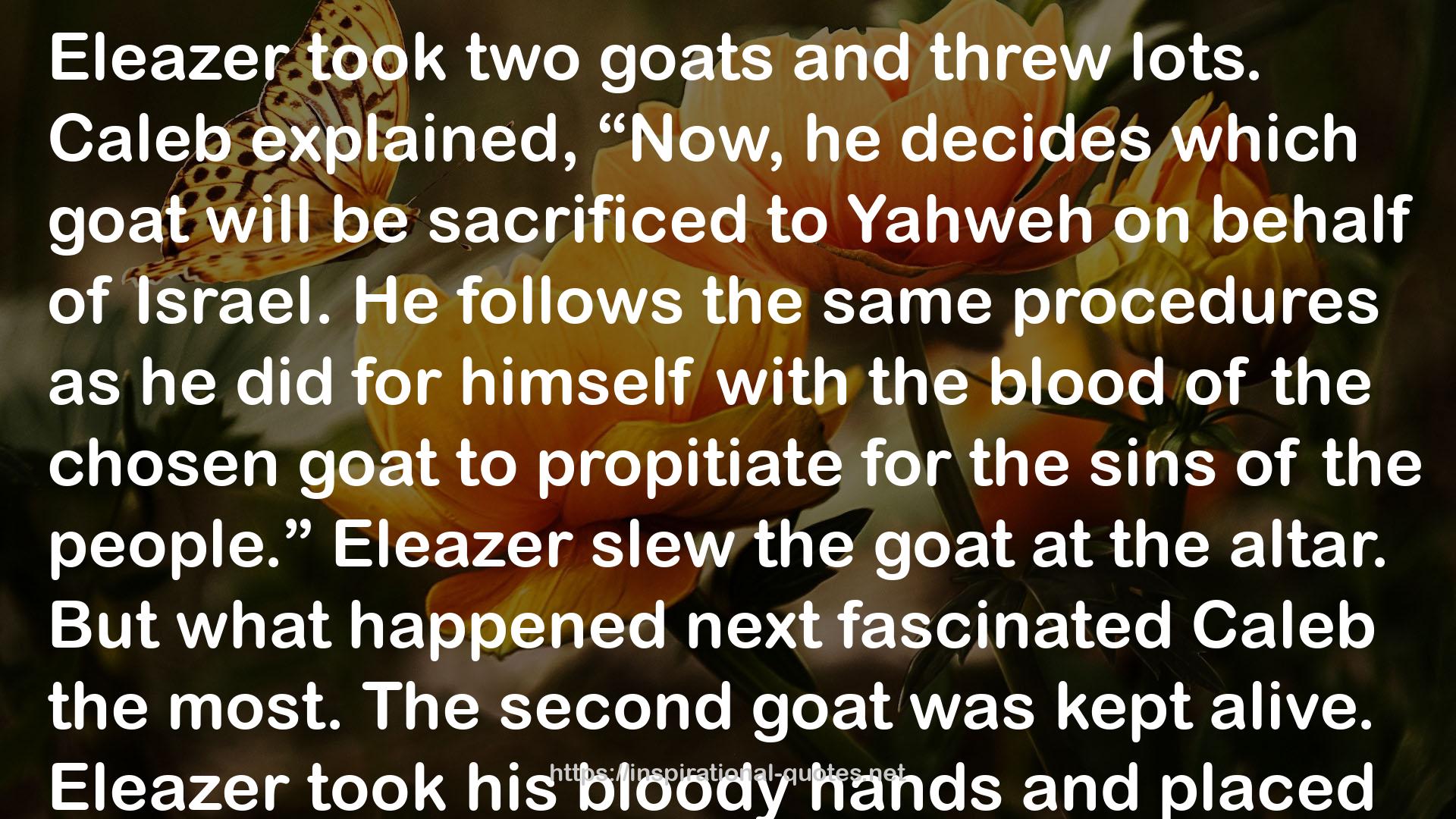63
" The Hebrew for the words “wild animals” and “hyenas” are not readily identifiable,[10] so the ESV translators simply guessed according to their anti-mythical bias and filled in their translations with naturalistic words like “wild animals” and “hyenas.” But of these words, Bible commentator Hans Wildberger says, “Whereas (jackals) and (ostriches), mentioned in v. 13, are certainly well-known animals, the creatures that are mentioned in v. 14 cannot be identified zoologically, not because we are not provided with enough information, but because they refer to fairy tale and mythical beings. Siyyim are demons, the kind that do their mischief by the ruins of Babylon, according to [Isaiah] 13:21. They are mentioned along with the iyyim (goblins) in this passage.[11] "
― Brian Godawa , Joshua Valiant (Chronicles of the Nephilim Book 5)
70
" The Dead Sea Scrolls of Qumran evidence a preoccupation with demonology that includes reference to this very Isaianic passage. In The Songs of the Sage, we read an exorcism incantation, “And I, the Instructor, proclaim His glorious splendor so as to frighten and to terrify all the spirits of the destroying angels, spirits of the bastards, demons, Lilith, howlers, and [desert dwellers…] and those which fall upon men without warning to lead them astray[18] Note the reference to “spirits of the bastards,” a euphemism for demons as the spirits of dead Nephilim who were not born of human fathers, but of angels.[19] "
― Brian Godawa , Joshua Valiant (Chronicles of the Nephilim Book 5)
77
" Come, I will let you know what this people will do to your people in the latter days. The oracle of Balaam the son of Beor, the oracle of the man whose eye is opened, the oracle of him who hears the words of El, and knows the knowledge of Elyon, who sees the vision of Shaddai, falling down with his eyes uncovered: I see him, but not now; I behold him, but not near: A star shall come out of Jacob, and a scepter shall rise out of Israel; it shall crush the forehead of Moab and break down all the sons of Seth. Edom shall be dispossessed; Seir also, his enemies, shall be dispossessed. Israel is doing valiantly. And one from Jacob shall exercise dominion and destroy the survivors of cities! "
― Brian Godawa , Joshua Valiant (Chronicles of the Nephilim Book 5)

